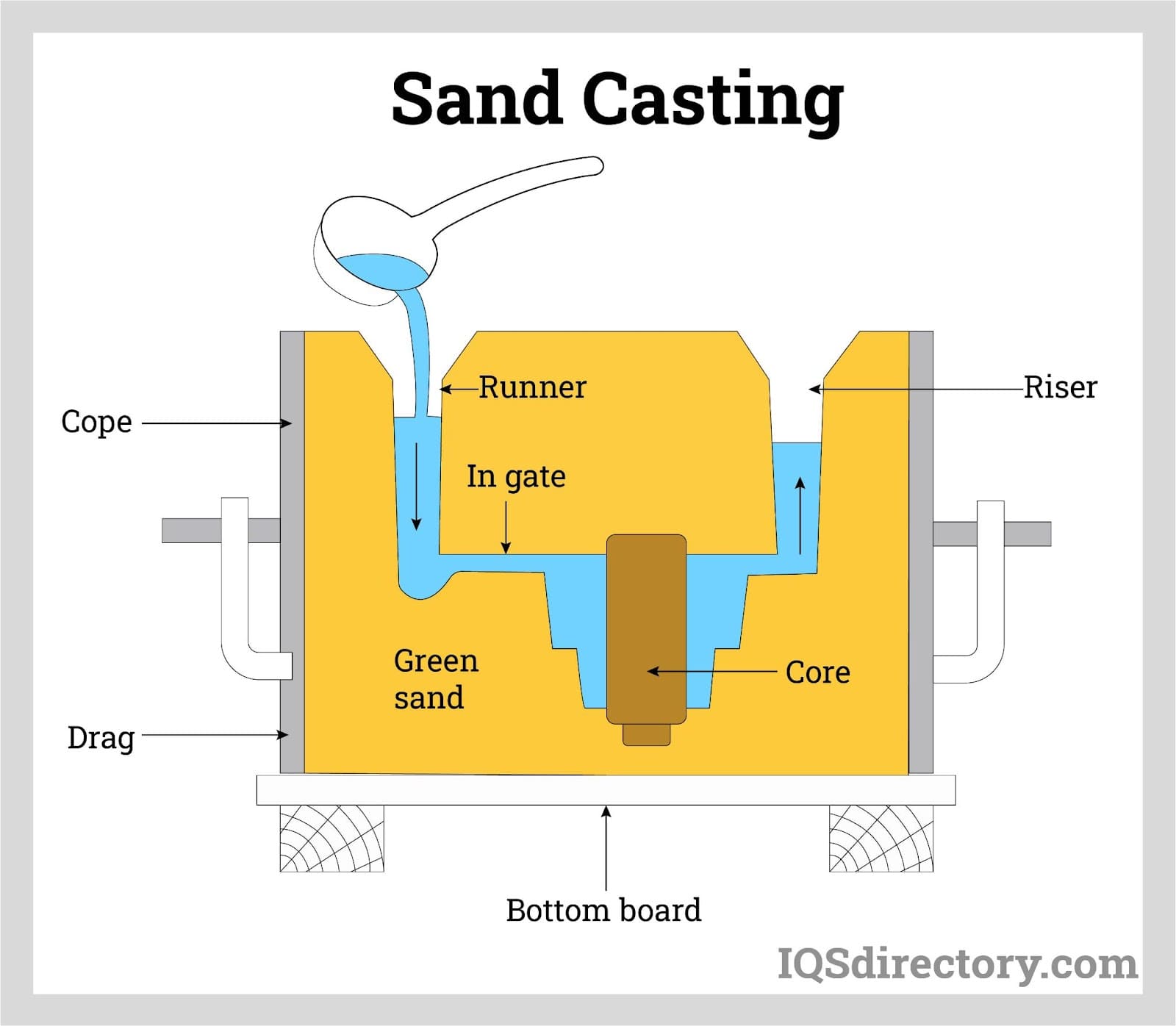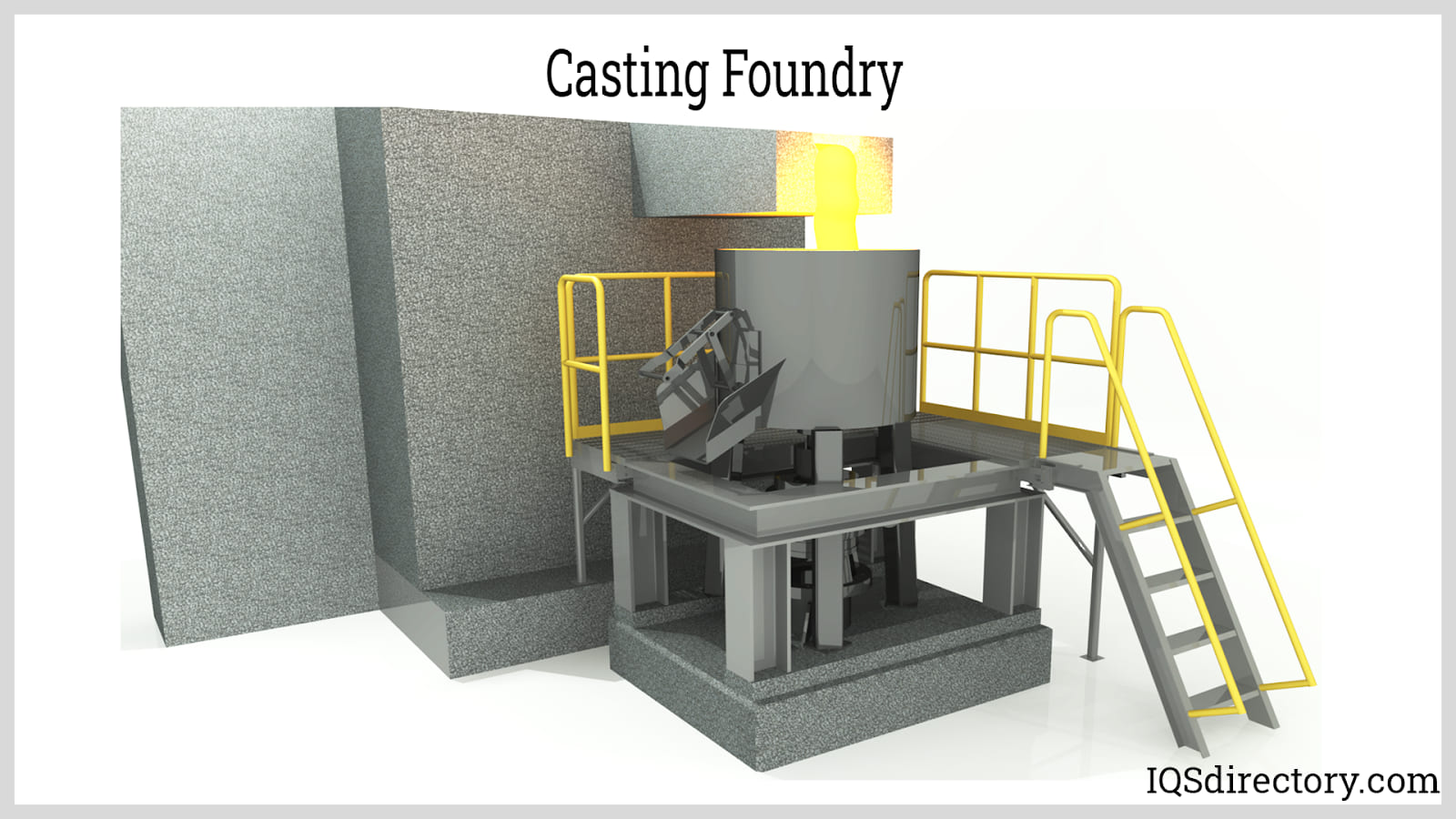Aluminum Foundry Wisconsin holds an vital place in casting projects
Just How Aluminum Foundry Adds To Innovations in Aerospace Engineering
Aluminum shops are important to developments in aerospace engineering. They produce light-weight, high-strength elements that are crucial for contemporary aircraft. Through innovative casting strategies, these foundries develop complex geometries that enhance structural stability. Additionally, the growth of superior Aluminum alloys sustains the sector's concentrate on fuel performance and sustainability. Obstacles remain in the production procedure. Comprehending these factors exposes the extensive effect of Aluminum on aviation's future.
The Value of Lightweight Products in Aerospace Design
As the aerospace market proceeds to advance, the significance of lightweight products comes to be significantly apparent. The demand for effectiveness and sustainability drives designers to focus on using materials that reduce overall weight without jeopardizing structural honesty. Lightweight products, especially Aluminum, play an important duty in improving gas performance, improving payload capacity, and increasing the total performance of airplane.
The integration of these materials enables for ingenious designs, making it possible for manufacturers to create even more wind resistant shapes that can stand up to severe problems. The decrease in weight not only decreases functional prices yet likewise adds to a decreased ecological footprint, straightening with international efforts towards sustainability in aviation.
Advanced Spreading Techniques in Aluminum Foundries
Advanced spreading strategies in Aluminum factories play a crucial role in aerospace design by allowing the production of precise and lightweight parts. Advancements in mold and mildew design and precision spreading procedures are necessary in achieving perfect performance and structural honesty. Additionally, the growth of light-weight alloys boosts the overall effectiveness and efficiency of aerospace applications.
Cutting-edge Mold And Mildew Layout
Cutting-edge mold and mildew design plays an essential duty in the effectiveness and efficiency of Aluminum shops, particularly within the aerospace market. By leveraging advanced materials and methods, modern-day mold and mildews can be crafted to endure high temperature levels and stress, ensuring peak performance throughout the casting procedure. These styles frequently include complex geometries that enable for the manufacturing of light-weight yet structurally sound parts, crucial for aerospace applications. Furthermore, using computer-aided layout (CAD) software application assists in specific modeling, making it possible for shops to simulate and improve mold and mildew styles prior to physical manufacturing begins. This not only improves the high quality of actors parts yet additionally lowers waste and lead times, causing significant expense savings. Generally, cutting-edge mold and mildew layout is a cornerstone of progression in Aluminum Foundry innovation for aerospace engineering.
Accuracy Casting Procedures
The efficiency of ingenious mold layouts seamlessly incorporates with precision casting procedures, which are essential for generating premium Aluminum parts in aerospace design. These procedures, consisting of sand spreading, pass away spreading, and investment casting, guarantee the creation of complex geometries with limited tolerances. Advanced methods like vacuum casting and pressure die casting enhance the honesty and surface area finish of the end products. Precision casting decreases material waste while maximizing the mechanical residential properties of Aluminum, important for aerospace applications. In enhancement, utilizing real-time monitoring and progressed simulation tools during the casting process enables prompt modifications, resulting in improved quality assurance. Collectively, these precision casting processes position Aluminum shops at the leading edge of aerospace development, sustaining the market's need for integrity and performance.
Light-weight Alloy Advancement
As aerospace designers seek to boost fuel effectiveness and performance, lightweight alloy growth ends up being a necessary emphasis in Aluminum factories. These foundries utilize advanced casting methods to create alloys that supply premium strength-to-weight ratios. Technologies in alloy structure, consisting of the incorporation of components like lithium and magnesium, make it possible for the production of products that endure severe problems while lowering general airplane weight. Techniques such as die spreading and financial investment casting facilitate the accuracy manufacturing of intricate shapes, which are critical for aerospace applications. Additionally, continuous study intends to optimize these alloys for enhanced mechanical properties and enhanced durability. By prioritizing lightweight alloy growth, Aluminum foundries considerably add to the evolution of aerospace design, paving the way for more effective and lasting aircraft designs.

Enhancing Structural Integrity With Aluminum Components
Aluminum parts use considerable advantages in enhancing structural integrity within aerospace design. Their light-weight nature adds to general efficiency while keeping strength, which is essential for aircraft efficiency. Furthermore, the anxiety resistance properties of Aluminum assistance guarantee the sturdiness and dependability of aerospace structures under different operational problems.
Lightweight Product Conveniences
While standard materials often endanger weight for strength, making use of Aluminum elements in aerospace engineering supplies considerable benefits in structural honesty. Aluminum's lightweight nature contributes to total style efficiency, permitting more structured aircraft that eat less gas, consequently enhancing sustainability. The product's outstanding strength-to-weight ratio assurances that elements maintain longevity without adding unneeded mass. This quality cultivates enhanced performance and dexterity in flight, in addition to maximized payload abilities. Furthermore, Aluminum's resistance to deterioration prolongs the lifespan of aerospace structures, lowering maintenance expenses and boosting safety. As suppliers increasingly take on Aluminum alloys, the aerospace industry experiences a transformative shift in the direction Read More Here of more effective and effective engineering options that focus on both performance and environmental responsibility.
Anxiety Resistance Qualities
Although various materials have one-of-a-kind properties, Aluminum's phenomenal stress and anxiety resistance stands out as a critical factor in enhancing the structural integrity of aerospace elements. This resistance plays a critical role in making certain that airplane can stand up to numerous functional anxieties, including fatigue, impact, and environmental conditions. Aluminum alloys, especially crafted for aerospace applications, show high tensile stamina while maintaining light-weight characteristics, allowing engineers to make more reliable frameworks - Aluminum Foundry. In addition, the capability of Aluminum to withstand cyclic loading without significant contortion contributes to the long life and dependability of aerospace elements. As developments continue in Aluminum Foundry strategies, the development of stress-resistant Aluminum elements promises more enhancements in performance, safety and security, and efficiency throughout the aerospace industry, strengthening Aluminum's duty as a favored material in modern-day design
Gas Performance Improvements Driven by Aluminum Innovations
As the aerospace market seeks to improve gas effectiveness, innovative usages of Aluminum have become a necessary service. Aluminum's light-weight nature notably minimizes aircraft weight, permitting reduced fuel usage throughout trip. This decrease visit in weight is vital, as also small declines can cause considerable renovations in overall gas economy.
Advanced Aluminum alloys, created for enhanced stamina and sturdiness, make it possible for makers to produce parts that maintain structural stability while decreasing mass - Aluminum Foundry. Additionally, the combination of Aluminum in airframes and engine elements promotes improved the rules of aerodynamics, adding to minimized drag and enhanced effectiveness
The fostering of Aluminum in aerospace not just meets the demand for fuel-efficient design however additionally aligns with governing pressures for lower exhausts. As these developments proceed to advance, they play a substantial role in setting new criteria for gas efficiency, making sure that the aerospace market can meet expanding financial and ecological challenges.

The Function of Aluminum in Sustainable Aviation Practices
The raising focus on sustainable aviation techniques has actually placed Aluminum as an important material in the quest for greener aircraft design. Known for its light-weight homes, Aluminum significantly lowers airplane weight, causing lower fuel intake and exhausts. Its recyclability better boosts its sustainability account, as Aluminum can be recycled indefinitely without loss of quality. This particular sustains a circular economy within the aeronautics field, lessening waste and resource deficiency.
In addition, innovations in Aluminum alloys have actually enhanced their strength and corrosion resistance, allowing for longer life span and reduced upkeep needs. These advancements help with the growth of extra effective airplane frameworks, contributing to general sustainability initiatives. In addition, Aluminum's thermal conductivity plays an essential duty in energy-efficient layouts, enhancing systems such as warm exchangers. Collectively, these features highlight Aluminum's essential function beforehand sustainable air travel, lining up with international initiatives targeted at lowering the environmental impact of air traveling.
Obstacles Faced by Aluminum Foundries in Aerospace Production
While Aluminum shops play a vital duty in aerospace manufacturing, they deal with substantial obstacles that can influence production effectiveness and top quality. One significant challenge is the rigid quality assurance requirements needed in the aerospace sector. Any kind of defect can jeopardize safety and security and efficiency, demanding rigorous evaluation processes that expand production timelines. Furthermore, foundries typically compete with varying basic material costs, which can affect pricing and productivity. The intricacy of Aluminum alloys used in aerospace applications further complicates the manufacturing procedure, as accurate formulas are important for attaining wanted mechanical residential or commercial properties. Proficient labor lacks impede the capability to preserve top quality manufacturing degrees. Lastly, environmental regulations enforce limitations on exhausts and waste administration, requiring foundries to purchase sustainable practices, which can be cost-prohibitive. These elements collectively produce a landscape where Aluminum foundries must Extra resources constantly adapt to fulfill the advancing demands of aerospace production while guaranteeing safety and conformity.
Future Trends in Aluminum Applications for Aerospace Design
With developments in innovation and increasing needs for efficiency, the future of Aluminum applications in aerospace engineering is positioned for significant makeover. The assimilation of innovative Aluminum alloys and compounds is anticipated to enhance strength-to-weight proportions, leading to even more fuel-efficient airplane designs. Additionally, improvements in additive production methods will certainly permit the manufacturing of complicated Aluminum frameworks that were previously impossible, optimizing efficiency and reducing waste.

Sustainable methods will certainly play a crucial function, with a growing emphasis on recycling Aluminum to lessen ecological effect. The aerospace field is likely to embrace smarter manufacturing processes, such as automation and man-made knowledge, making certain higher high quality and precision in Aluminum components. Cooperations in between Aluminum shops and aerospace business will foster study and growth, leading the method for new applications that meet the stringent needs of modern-day aerospace design. Generally, the future looks guaranteeing for Aluminum's function in shaping the skies
Often Asked Questions
What Are the Environmental Effects of Aluminum Production in Aerospace?
The ecological influences of Aluminum production in aerospace consist of substantial power usage, greenhouse gas discharges, and habitat interruption. In addition, mining processes can lead to dirt degradation and water contamination, elevating problems regarding sustainability and ecological equilibrium.
Exactly How Does Aluminum Contrast to Other Products in Aerospace Applications?
Aluminum supplies an one-of-a-kind combination of light-weight properties, rust resistance, and cost-effectiveness compared to various other materials. Its high strength-to-weight proportion makes it especially helpful for aerospace applications, enhancing gas efficiency and general performance in aircraft layout.
What Certifications Do Aluminum Foundry Employees Demand for Aerospace Projects?
Aluminum Foundry workers call for specialized training in metallurgy and spreading methods, in addition to understanding of aerospace sector standards. Qualifications in quality assurance and safety and security protocols are likewise vital to assure compliance with rigid aerospace job needs.
Exist Any Type Of Safety And Security Issues With Making Use Of Aluminum in Aerospace Engineering?
Security problems relating to Aluminum in aerospace design include vulnerability to tiredness, deterioration, and tension cracks. Correct therapy and alloy choice are vital to alleviate these threats, guaranteeing architectural stability and general safety and security in aerospace applications.
Just How Does Aluminum Recycling Advantage the Aerospace Sector?
Aluminum reusing greatly profits the aerospace industry by minimizing material expenses, reducing environmental impact, and saving power. This lasting method enhances the sector's performance while promoting making use of light-weight, high-performance components in aircraft production.
Advanced spreading strategies in Aluminum shops play a vital role in aerospace engineering by enabling the manufacturing of light-weight and accurate parts. Cutting-edge mold style plays a necessary duty in the efficiency and efficiency of Aluminum shops, particularly within the aerospace market. As aerospace designers look for to improve fuel performance and efficiency, light-weight alloy advancement becomes a vital emphasis in Aluminum foundries. Aluminum alloys, particularly engineered for aerospace applications, display high tensile strength while preserving lightweight qualities, enabling designers to develop much more efficient structures. Collaborations in between Aluminum foundries and aerospace companies will cultivate research study and advancement, leading the method for brand-new applications that fulfill the strict needs of contemporary aerospace design.